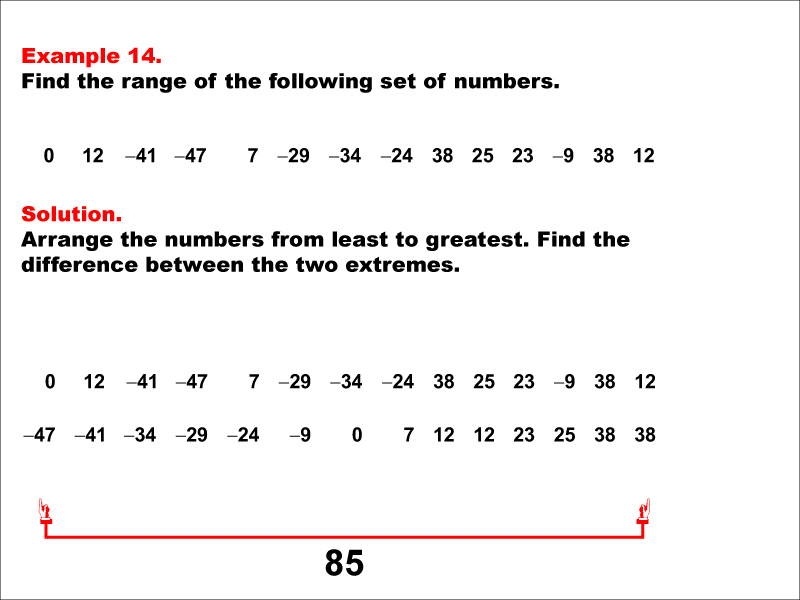
Display Title
Math Example--Measures of Central Tendency--Range: Example 14
Display Title
Math Example--Measures of Central Tendency--Range: Example 14

Topic
Measures of Central Tendency
Description
This example illustrates how to find the range of the following set of numbers: 0, 12, -41, -47, 7, -29, -34, -24, 38, 25, 23, -9, 38, 12. The solution involves arranging the numbers from least to greatest (-47 to 38) and finding the difference between the two extremes. The range is calculated to be 85. This example is particularly valuable as it includes a mix of positive, negative, and zero values, helping students understand how to handle diverse datasets when calculating the range.
In the broader context of measures of central tendency, examples like this are crucial for developing a comprehensive understanding of data analysis. The range provides insight into the spread of data, complementing other measures such as mean, median, and mode. By working through multiple examples with varying types of numbers, students can better grasp how these measures work together to provide a complete picture of a dataset's distribution.
Teacher's Script: Now, let's take a closer look at this example. We'll start by organizing our numbers from smallest to largest, paying special attention to the negative values and zero. Then, we'll identify the minimum and maximum values to calculate the range. This process will help us understand how the range represents the spread of our data, especially when dealing with a mix of positive and negative numbers. Remember, the absolute value of the difference is key when working with negative numbers.
For a complete collection of math examples related to Measures of Central Tendency click on this link: Math Examples: Measures of Central Tendency: Range Collection.
| Common Core Standards | CCSS.MATH.CONTENT.6.SP.B.4, CCSS.MATH.CONTENT.7.SP.B.4, CCSS.MATH.CONTENT.6.SP.B.5.C |
|---|---|
| Grade Range | 6 - 8 |
| Curriculum Nodes |
Algebra • Probability and Data Analysis • Data Analysis |
| Copyright Year | 2014 |
| Keywords | data analysis, tutorials, measures of central tendency, range |